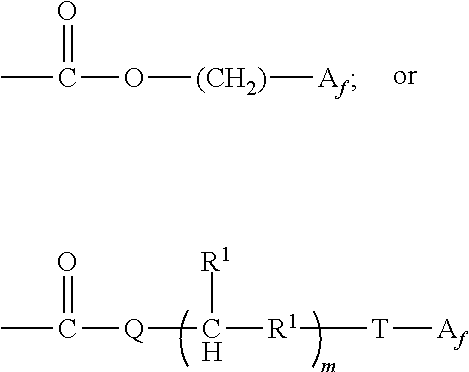High temperature treated media
a technology of high temperature and treated media, applied in the field of thermoforming, can solve the problems of reducing product flexibility, increasing costs, and future media being exposed to higher temperatures and other harsh operating conditions, and achieve the effect of reducing or eliminating glass fiber in filtration media
- Summary
- Abstract
- Description
- Claims
- Application Information
AI Technical Summary
Benefits of technology
Problems solved by technology
Method used
Image
Examples
Embodiment Construction
[0039]The media include nonwoven webs comprising a thermally bonded web comprising a first bicomponent fiber and an optional second bicomponent fiber or staple fiber that can function at elevated temperatures. The media of the invention comprises a thermally bonded web comprising a bi-component fiber with high temperature sheath melting properties that can be combined with staple media fibers or secondary fibers, and can be substantially free of glass fiber. In one embodiment, the bi-component fiber(s) are combined with a staple polyester fiber. In another embodiment, the bi-component fiber(s) are combined with a staple cellulosic fiber, preferably a cotton linter fiber. In a third embodiment, a method of forming the thermally bonded web comprises combining a bi-component fiber in an aqueous furnish with other staple fibers and forming the web using conventional inclined screen paper making machines. A final embodiment comprises a method of filtering a mobile fluid.
[0040]The filter ...
PUM
| Property | Measurement | Unit |
|---|---|---|
| Temperature | aaaaa | aaaaa |
| Temperature | aaaaa | aaaaa |
| Temperature | aaaaa | aaaaa |
Abstract
Description
Claims
Application Information
 Login to View More
Login to View More - R&D
- Intellectual Property
- Life Sciences
- Materials
- Tech Scout
- Unparalleled Data Quality
- Higher Quality Content
- 60% Fewer Hallucinations
Browse by: Latest US Patents, China's latest patents, Technical Efficacy Thesaurus, Application Domain, Technology Topic, Popular Technical Reports.
© 2025 PatSnap. All rights reserved.Legal|Privacy policy|Modern Slavery Act Transparency Statement|Sitemap|About US| Contact US: help@patsnap.com


